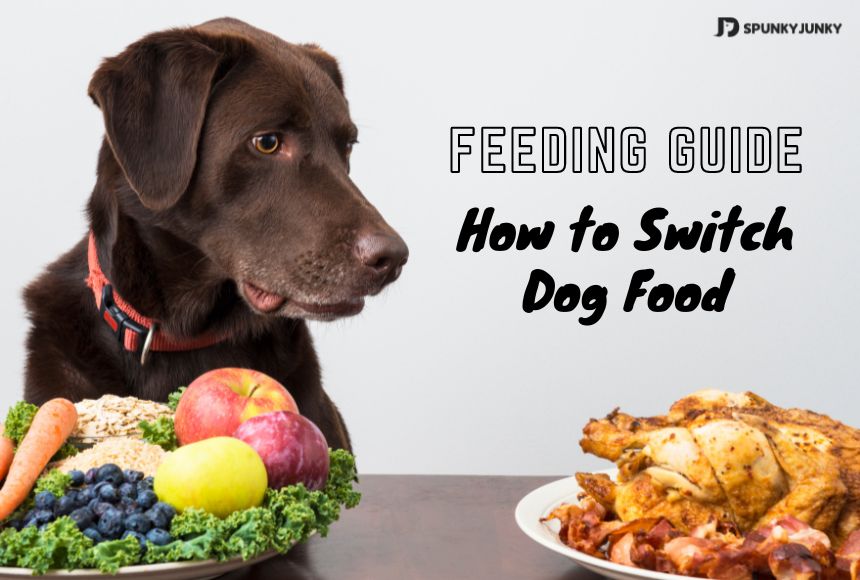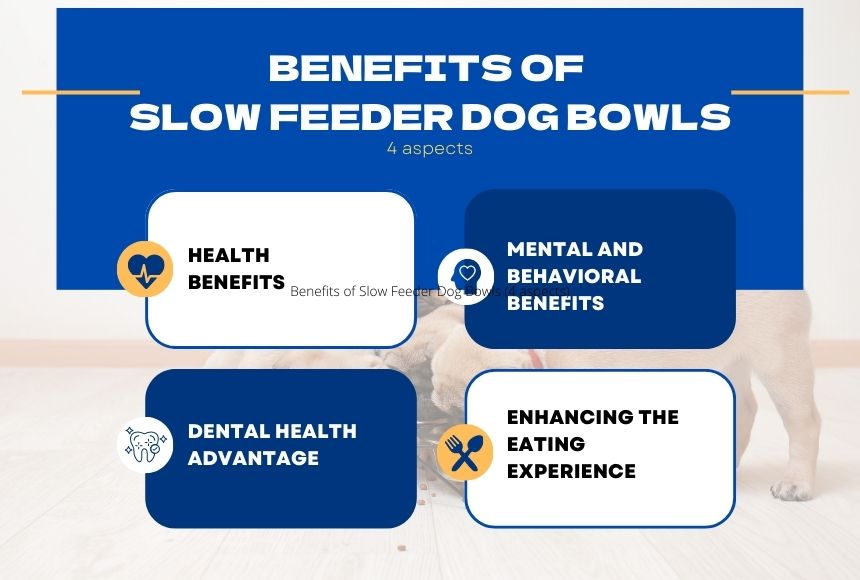Calling all dog lovers and pet parents! Has your dog reached the age where he needs to change his food? We know that changing your beloved puppy's food can be a daunting task.
Today, we'll reveal the secrets to a smooth dog food change, why should switch the dog's food, and how to switch dog food.
So, let's explore the science of changing dog food!
Why Should Switch Your Dog's Food?
Changing your dog's food may be beneficial for a number of reasons. Here are some key factors to consider:
1. Age: As dogs age, their nutritional needs change. Puppies need more nutrients to support their growth and development. On the other hand, senior dogs may benefit from foods tailored to their aging bodies. Switching to a dog's age-appropriate food ensures they get the right balance of nutrients for their life stage.
2. Weight: If your dog is underweight or overweight, changing foods can help with these issues. When your dog is underweight, you must switch to more nutritious food to prevent stunting problems. When your dog is overweight, you should reduce the amount of high-calorie food given. Tailor your dog's weight-based food to help lose or maintain weight and promote a healthier body condition.
3. Activity Level: Dogs with different activity levels have different energy needs. Active dogs and working breeds may benefit from a high-energy formula. Less active or older dogs may appreciate lower-calorie options.
4. Health: Some dogs have specific medical conditions or sensitivities that require specialized diets. For example, a dog with allergies may require a diet with limited ingredients. Dogs with certain health problems may benefit from a diet with supplements or specific ingredients.
How to Switch Dog Food
Switching your dog's food can be tricky, but fear not! We have two awesome ways to make this transition smooth and enjoyable for your furry friend. Let's dive in and fetch those tips!
1. Gradual Dog Food Switch

We all know some dogs are real foodies, while others may have a sensitive tummy. To avoid any tummy troubles, take it slow and steady. Plan a delightful food journey for your dog over a week:
Day 1: Serve 10% new food and 90% old food.
Day 2: Mix it with 20% new and 80% old food.
Day 3: Add 30% new and 70% old food for a balanced blend.
Day 4: Reach 40% new and 60% old food to keep the taste buds guessing.
Day 5: Time to tip the scales with 60% new and 40% old food.
Day 6: Keep the excitement growing with 80% new and 20% old food.
Day 7: Ta-da! It's time for a full serving of 100% new food!
Woof! If your dog does not feel paw-positively great during this process, return to the old food and take an even slower approach. Remember, a vet's advice is always a bone-tastic idea!
2. Quick Dog Food Switch

Sometimes, life calls for quick decisions, even with your dog's food. Healthy adult dogs can handle a fast switch, but puppies and dogs with health issues need extra care. Let's embark on this speedy journey:
Day 1, Meal 1: Offer a small amount of the new food, about a quarter of their usual meal.
Day 1, Meal 2: If they enjoyed the last meal, offer a bigger portion of the new food. If not, a small amount will do.
Day 1, Meal 3: Repeat the same routine to keep the excitement going.
Day 2, Meal 1 & 2: Follow the pattern and offer a bigger serving if they loved their last meal.
Day 2, Meal 3: It's time for a regular meal size of the new food.
Never let puppies or dogs with health issues go on this fast food journey. It's best to consult your vet and find a safer route. Happy eating, little tail-waggers! 🐾
Problems and Solutions When Switching Dog Food
Changing your dog's food can sometimes cause problems, but don't worry! Proper planning and care allow you to transition your furry friend to a new diet smoothly. Here are some common problems and solutions that can arise when changing dog food:
1.Indigestion: diarrhea, vomiting, flatulence
● Solution: Use a slower transition method instead. Mix old and new foods for a few days, gradually increasing the proportion of new foods. This helps your dog's digestive system adjust to the changes more comfortably.
2.Appetite changes: refusal to eat
● Solution: Sometimes, dogs may hesitate to try new foods immediately. Be patient, offer new foods in small portions, or try mixing up tasty ingredients like plain chicken or broth to entice them.
3.Allergic reactions: skin irritation, itching
● Solution: If you suspect an allergic reaction, consult your veterinarian. They may recommend hypoallergenic foods or help identify specific allergens. Return to previous foods and avoid ingredients that cause allergies.
4.Gastrointestinal upset: abdominal pain
● Solution: Watch for signs of discomfort, such as whining or pacing. If your dog seems unwell, stop the new food and consult your veterinarian. They can recommend a different diet or provide pain relief.
5.lethargy and behavior changes
● Solution: Some dogs may feel a little uncomfortable during the transition. Provide extra attention, comfort, and familiar toys to relieve the stress they may be experiencing.
6.Ignore the dog's reaction:
● Solution: Pay close attention to your dog's reactions to new foods. Keep an eye on their stools, energy levels, and overall behavior. This can help you spot any issues early on and make necessary adjustments.
Remember that every dog is unique and may respond differently to changes in food. Seek immediate veterinary guidance if you experience significant problems or your dog's symptoms persist. With patience and proper care, you can change your dog's food and keep them happy and healthy!
What Are the Symptoms of Switching Dog Food Too Quickly?
While a quick change in your dog's food may be easy on you, it can also lead to a variety of uncomfortable symptoms in your dog.
Indigestion: The most obvious symptoms are digestive problems, such as diarrhea, vomiting, or excessive gas. Sudden changes in diet can disrupt the delicate balance of your dog's gastrointestinal system, leading to these unpleasant symptoms.
Changes in appetite: If your dog is not used to a new food, they may become fussy or refuse to eat altogether. Sudden shifts can upset their taste buds and make mealtime less enjoyable.
Behavioral changes: Sudden changes in diet can affect a dog's mood and behavior. They may become irritable, anxious, or restless.
When to Switch Puppy to Dog Food

The right time to switch your puppy to adult dog food depends on its breed size and individual growth rate.
Here are some guidelines for when to switch your puppy to adult dog food based on their breed size:
Small Breeds: Chihuahua, Dachshund, Toy Poodle
Small breed puppies can usually switch to adult food at around 9 to 12 months of age. Since they mature faster, they reach their adult size and nutritional needs earlier than larger breeds.
Medium Breeds: Beagle, Bulldog, Labrador Retriever
Medium-sized breed puppies may transition to adult food between 12 to 14 months of age. Keep an eye on their growth and consult your veterinarian for guidance.
Large Breeds: Golden Retriever, German Shepherd, Boxer
Large breed puppies have a slower growth rate and must continue with puppy food until they are 12 to 18 months old. Switching too early can disrupt their balanced growth and lead to skeletal issues.
Giant Breeds: Great Dane, Saint Bernard, Newfoundland
Giant breed puppies require an extended period of growth and development. They should continue with puppy food until they are 18 to 24 months old.
Final Thoughts
Now, you already know how to switch dog food. Remember, each dog's journey to a new diet is as unique as their personality. Switching dog food takes patience, love, and understanding of their individual needs.
With our unique tips and expert guidance from your veterinarian, you are now fully prepared to make this culinary transformation a huge success.
Embrace the excitement of tail-wagging mealtime and watch your pooch thrive on new culinary adventures. Good luck to your dog!






